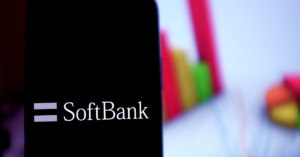As a market, women offer an opportunity bigger than India and China combined.
According to Frost & Sullivan’s 2020 Global Mega Trends to 2030 (1) research, women controlled over 43 trillion USD global consumer spending in 2020. As more women enter the global workforce and drive the world economy, their spending will increase further in the upcoming years.
Over the past years, there has been a rise in working women in almost every sector, including engineering, science, entrepreneurship, manual labor, and more. Women are now more successful than ever.
Even though men globally earn more, it’s the women who do maximum shopping (2). From essentials to groceries, from luxury goods to household items, from their jewelry to children’s diapers, women are always mostly involved in almost all buying decisions.
Let’s not forget that Indian women own over 11% of global gold (3) and make about 25% of the country’s workforce.
Yet, women, in general, have a segmented market compared to men.
And considering these numbers, it would be foolish to underestimate or ignore the “she” consumer. Hitherto, several companies do that; even the ones confident that they have a winning strategy fail when it comes to females.
Dell, for example, once made a short-lived effort to market laptops specifically to women. It fell into the classic “make it pink” mindset back in 2009. Its website emphasized colors, accessories, and tips for finding recipes and counting calories. They received massive criticism (4). Thankfully, Dell promptly corrected its course. But the bigger question is, why didn’t its marketing team figure out the potentially awkward marketing campaign before the launch?
As Adidas India’s marketing director, Damyant Singh, had pointed out almost a decade ago (5),
“Women don’t need empowerment from (sports) brands.”
Businesses often make the classic misken when marketing to women and still do. Often, their line of approach is “I as a brand license women to pursue their dreams.” However, continuous communication in that manner is complete madness.
For starters, women, including myself, are the most powerful consumer group worldwide, don’t desire or need validation of our life choices from brands. It is about time companies pay attention to consumers’ sentiments and, more importantly, their needs.
Even today, it is tough for women to find the right pair of pants, purchase a healthful meal, or get financial advice without feeling patronized, or make the time to stay in shape. Though women control purchasing decisions in most consumer products, companies keep offering them poorly conceived services and products and outdated marketing narratives that promote female stereotypes. Look at fairness cream products, for example. Or consider almost all Indian tv advertisements.
Watch the below video for more insights:
Missing the Female-Centric Economy
Priti Rathi Gupta, the Promoter and MD at Anand Rathi Group, at 40, was enrolled in the President Management Programme at Harvard University. There she made a business case for a female-centric financial management platform as a part of her class project. And she was surprised by the skepticism from her classmates.
Rathi says (6), “They were oblivious to different needs of women. Women live longer, earn less, and have a different outlook when it comes to investment. Yet, they didn’t seem to comprehend the rationale.”
She launched a digital financial planning platform for women, the university project LXME. And within four months, it got over 5k users.

As we discussed, most experts say that most brands don’t think about gender as the focus of their services and products.
According to Alpana Parida, former CEO of DY Works,
“small sporadic experiments have happened in India’s consumer market to cater to women, but there has been nothing exceptional so far. Mostly, they position the same product with a different communication strategy.”
And as Apurva Purohit from Jagran Prakashan (7) points out, the one reason for it is economical. The basic problem is that women in India often don’t have control over finance. If 25 out of 100 women work, and 99 out of 100 men work, marketers will go after the bigger spender.
The mean disposable per capita income of women, 46k INR per year, is about one-third of men, 190k INR. Hence, products that help women live their lives efficiently and effectively are on low priority in households, describes Akshaya Vijayalakshmi, IIM-A’s Marketing professor (8).
The Gender Stereotype
Even though slowly, things have started to change.
There may be only a few women in leadership positions, but they find ways to earn and supplement household income. Also, women in India have started delaying marriages to get more years to spend on themselves. Rising internet penetration, growing digital payment systems, and new micro-entrepreneurship opportunities encourage them to improve their lifestyles.
Sairee Chahal, the CEO and founder of Sheroes (9), highlights that with the surge in entrepreneurship opportunities, platforms offering gig work, and work-from-home options, women aspire to climb their standing.
However, marketers often fail to realize these nuances and communication are still black and white.
As Ameera Shah, Metropolis Healthcare’s MD, points out, there is a tendency to classify all women under one category.
“Like not all men are cheaters and philanderers, not all women are sentimental.”
She added, “there is a deep assortment among women that most marketers don’t understand and fail to communicate.” While brands have started recognizing it and launching campaigns to break stereotypes, most product categories keep following the older patterns.
“Mainstream brands are often wary of trying new consumer products or strategies. It is not that they can’t target women; they are risk-averse,”
says Fractal Analytics’ Chief Design Officer, Parameswaran Venkataraman (10).
According to him, for categories where women are end-users, women play a key role in buying decisions. Still, men are deemed to have the final say regarding more expensive appliances like AC or fridges.
According to a Google study on YouTube ads over the past four years, male characters have more screen time, 59%, than women, 41%. Moreover, men are also heard two times, 67%, more often than women. Females were also less likely to be seen as having a profession and a leadership role.
Then, what about categories focused on women, such as shoes and clothes? Sadly, here too, the reality is not pretty.
Fashion brands for women, be it clothes or shoes, are still not a priority as they are geared towards looking good. “Although retail brands heavily focus on women, they often look at popular stereotype requirements of fashion and beauty, ‘looking good,’ and fails to focus on other needs, such as functionality and comfort,”
says Rajni Menon, CSO, and Head of Solutions Development at DAN Solutions India (11).
Take sports shoes, for example. Men have more options than women. In sports clothing, prominent brands’ products are often not designed according to Indian body types.
According to Neharika Vohra, IIMA’s Organizational Behaviour professor (12), as a working woman who needs comfortable shoes, she still purchases the same pair in different colors. Only a handful of brands like Hush Puppies and RedTape are comfortable. But, they hardly offer any variety. While Liberty did a good job when it comes to comfort, it didn’t upgrade.
She further added that even with clothes, many of them need high maintenance and must be dry-cleaned or hand-washed.
However, brands listening to women couldn’t be happier.
Although there are significant pay gaps, women-centric businesses have increased and flourished.
Two Indian Women-Focused Brands That are Thriving
Look at Nykaa or Zivame, for example.
While it has other competitions such as Myntra, Clovia, Birchbox, and more, these two brands rule the Indian market when it comes to targeting women consumers.

Notably, both are run by female CEOs and have a strong women workers percentage. These two companies have revolutionized the Indian e-commerce scene by employing women from different fields.
They both brought a lot of female-centric products into focus and created a new market from scratch. While Zivame built the market for products, often considered taboo in India, Nykaa built a market for essential oils, face masks, and other products considered as a luxury.
Both of them also brought several international brands into the Indian market. While Nykaa concentrated on creating a market for Bobbi Brown, Sephora, Anastasia Beverly Hills, and more, Zivame concentrated on Victoria’s Secrets, Hunkënmoller, Calvin Klein, etc. They brought in brands that were either unknown or not available in the Indian market otherwise.
Zivame: A Breakthrough into the Indian Women’s Intimate Lives
Before Zivame came into existence, lingerie shopping was a traumatizing experience for most Indian women. From teenage girls to aged women, they all had to undergo shame and stigma, asking for basic intimate wear in stores, primarily run by strange men. An uncomfortable experience indeed!
Zivame found the issue right from the streets and started a company with a vision to make lingerie shopping a comfortable, private, and exciting experience for women.
It exploded, and more and more women started shopping from Zivame, from daily inner-wear to other stuff like corsets and thongs that they would never even ask those strange men in stores to show.
Zivame didn’t stop there; it offered a quick way for women to calculate their bra size, making it simpler so they can do it themselves. It knew that app experience alone is not enough; translating the experience to real-life is equally important (13). Hence, they did this:

What Zivame Did with Lingerie, Nykaa Did with Beauty and Fashion Products – h3
From dollar-store products to high-end luxury items, Nykaa sells everything.
Purchasing ideal lipstick colors, foundation shade, or any cosmetic products related to skin tone is a tricky job. Most women needed to try a foundation or lipstick in a physical store, and that’s what Nykaa solved.
Like Zivame’s fit-code, Nykaa offered a way to check online how a lipstick or foundation would look on a skin tone.
Other Apps Catering to Females
Notably, both of them have also started manufacturing their products to stay strong in the market. They especially focus on an affordable range to reach more tier-2 and tier-3 consumers and add them to the market.
And with such revolutionary technology coming into women’s shopping experiences every day, it isn’t long before we will see AI, AR/VR under use for these products to make them more accurate and reliable.
With AR/VR, women will see how lipstick/foundation would look on their face, making them more accurate, hence, increasing online sales of these products while establishing loyalty and consumer trust for a brand.
There are also apps to track period, ovulation, apps that offer sex advice, sex toys, gynecological information, track mood swings, and pregnancy-related information. All of these apps are for women, and the possibilities are endless (14).
Even businesses that were previously male-centered have also started focusing on women. Take MPL, Mobile Premier League, India’s among the most prominent gaming apps, for example. Previously, the app only focused on Indian men. However, there has been a shift in the country’s e-sports sector.
In the past few years, online gaming has been the talk of the town, and interestingly, there has been a surge in female users. More women are engaging in e-sports, fantasy games and also contributing to sports content viewership. The company promptly noticed the change and started targeting women in its marketing campaigns (15).
The women-focused digital market has only started. There are still several untapped areas where businesses can make a lasting mark.
The Opportunities
While every woman has a different story, there are six basic pillars if we look at the patterns. These types are primarily defined by income, stage of life, age, pressure cooker, fast-tracker, relationship-focused, making ends meet, and fulfilled empty nesters (16).

Any company would be wise to target women consumers, especially when they know who they are targeting and what women look for in the marketplace.
As we talked about before, a handful of brands customizing services and products for females have reaped decent gains over the years. They are approaching the matter in two ways.
These brands genuinely believe that they can increase their customer base by staying relevant to women. For instance, Titan saw women’s watches were dying. Hence, they reimagine them as a jewelry product, and its famous range Raga is now a 350 crore INR brand.
Another category where there has been a massive shift is scooters. To make them more user-friendly, Honda and HereMoto Corp started introducing features like automatic transmissions, and several others also launched lower saddle versions. When they launched the scooter in 2001, Y. S. Guleria, Director of Sales and Marketing at Honda Motorcycle and Scooter India, stated that they did design input to serve a wider consumer spectrum from 18-year-olds to senior citizens, an appeal which served them well. Notably, scooter sales were highest in the progressive Indian states, with over 20% female buyers and over 33% total female users.
These brands created a new category and expanded their markets by building new consumer segments.
Several businesses have started looking at women as a new consumer base and creating products to cater to their needs. According to DAN Solution’s Menon, these brands have a competitive advantage over others.
As we said before, any company would be wise to target women consumers. But there are six industries where women are more likely to spend:
- Food
- Fitness
- Beauty
- Apparel
- Financial services
- Healthcare
Marketers need to pay attention to their behavior to understand women consumers and target them effectively, especially in the post-pandemic era (17).
Food
It represents one of the largest opportunities as women are responsible for the massive share of grocery shopping and meal preparation. It is also among consumers’ most important budget items. They can adjust it but never eliminate it.
Fitness
It is also a big business. In India, the retail value of the healthy food market is forecast to reach 8.5 billion USD by 2023 from 3.8 billion USD in 2018 (18). Even the global market for online fitness, valued at 6,046 million USD in 2019, is likely to reach 59,231 million USD by 2027, growing 33.1% CAGR from 2020 to 2027 (19).
It is no secret that Indian women have trouble finding time to stay in shape. The challenge for fitness companies is to make it more accessible for women. Most fitness clubs, for instance, are expensive and designed for men.
Usually, women are less interested in pumping themselves up than improving their cardiovascular health and getting toned. Electronic music, sweaty men, bright lights, and complicated equipment can often be a turnoff for women.
Curve, the world’s leading fitness chain for women, had recognized and responded to women’s concerns. And consequently, it saw a quick result.

It has a simple concept: fast and cheap exercise for women only, with no-frill spaces for middle-aged clients with an average build. Helpers stand by to guide clients through a simple 30-minute circuit. Hence, there is no requirement to hire a trainer.
Beauty Products and Services
Women usually tend to spend a higher portion of their income on cosmetics, yet they are fundamentally dissatisfied with the offerings (20). For one thing, there are multiple choices. A good first step towards gaining market share would be to put more women in leadership positions to offer input about what does and doesn’t resonate with the target consumers.
Apparel
According to a McKinsey report (21), the Indian apparel market will be worth over 59.3 billion USD by 2022, making it the sixth-largest globally. Yet, it has plenty of room for improvement, especially when it comes to affordability and fit.
Most women are not perfect-sized, and they don’t need the reminder every time they shop. Brands that can solve the fit issues, particularly for pants, can win a loyal following. Added advantage if they can offer several cuts to suit different figures with consistent size across the board, allowing consumers to discover their “fit block” and purchase multiple apparels, even online.
The price of clothing is another important point for women. Brands that can offer fun, trendy, and inexpensive clothing would see a rapid turnover as women value the ability to purchase a new outfit that doesn’t break their banks.
Financial Services
It is the industry; we believe least sympathetic to women and the industry that can gain the most if it changes its approach.
Despite the setbacks because of the economy, there are estimations that private wealth in India will grow to 800 trillion INR in 2024 from 430 trillion INR in 2019, at 13% CAGR (22). While Indian women have a significantly lower share, 20 to 30%, as of 2018 (23), the scene is rapidly changing.
Yet, financial companies continue to let women down with their services and quality level, which presume men as their target customers.
It is time for financial companies to stop treating women as a single customer segment and consider other factors like age, ethnicity, race, marital stature, educational levels, profession, and income.
Financial institutes and markets need to be thoughtful for data interpretation and create value propositions that meet women’s needs. According to several industry experts, developing services for women benefits them and all customers (24).
Companies that can find and adapt ways to help women save time and put them in more control over their finances will win over those who leave them annoyed and exhausted.
Wrapping Up
Consider this, women are unhappy consumers, with 40 trillion USD plus to invest. It represents a golden opportunity.
And when the dust from the pandemic settles, we believe, women will position themselves even more importantly in the economy and the world order than today.
While the number of working women will keep increasing, so will their continuous struggle with little time, work/life balance, and conflicting demands.
It’s time businesses wake up to the potential of the female economy to find a whole new range of monetizing opportunities.
Women are the consumers, and there is no reason they should settle for services and products that ignore or fail to meet their needs fully.
With the vaccines rolling out, the pandemic will soon come to an end. Now is the time to lay the base for post-pandemic growth. Your business’s odds of success will be up if you focus on women as a target market instead of a geographical market as soon as the world starts making a recovery.
Understanding and meeting women’s requirements will be the key to rebuild the economy, so the key to breakout growth, market share, and loyalty.
So, what are you waiting for? Take a look at all the women in your lives. You will find several problems to solve and monetize while making their difficult lives a tad bit easier.











